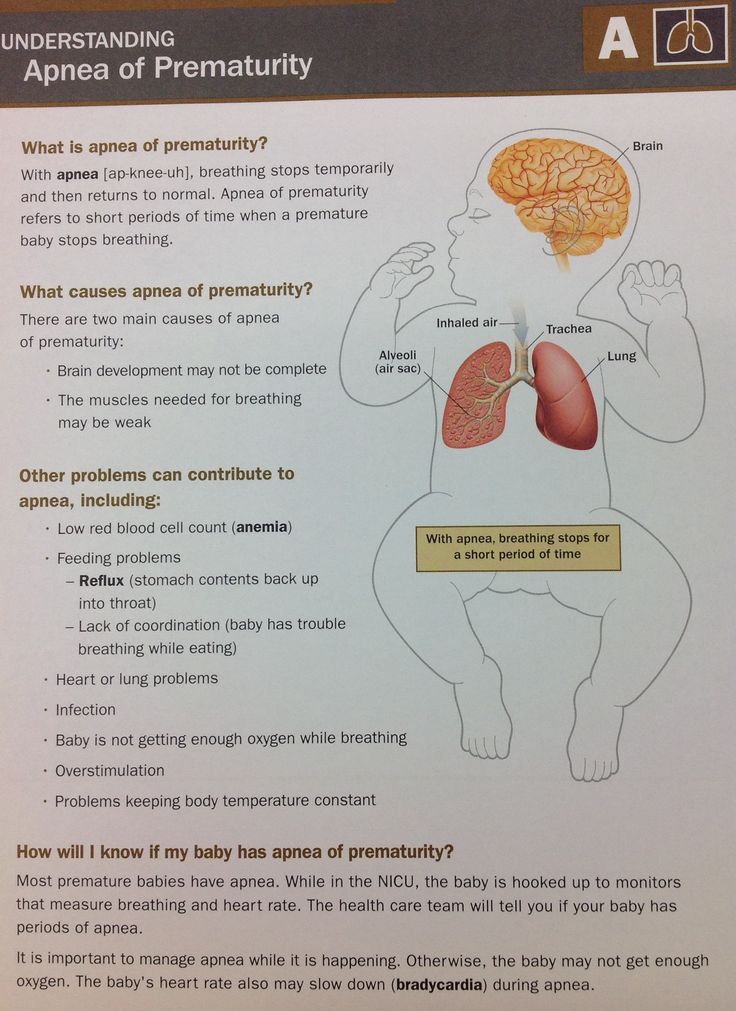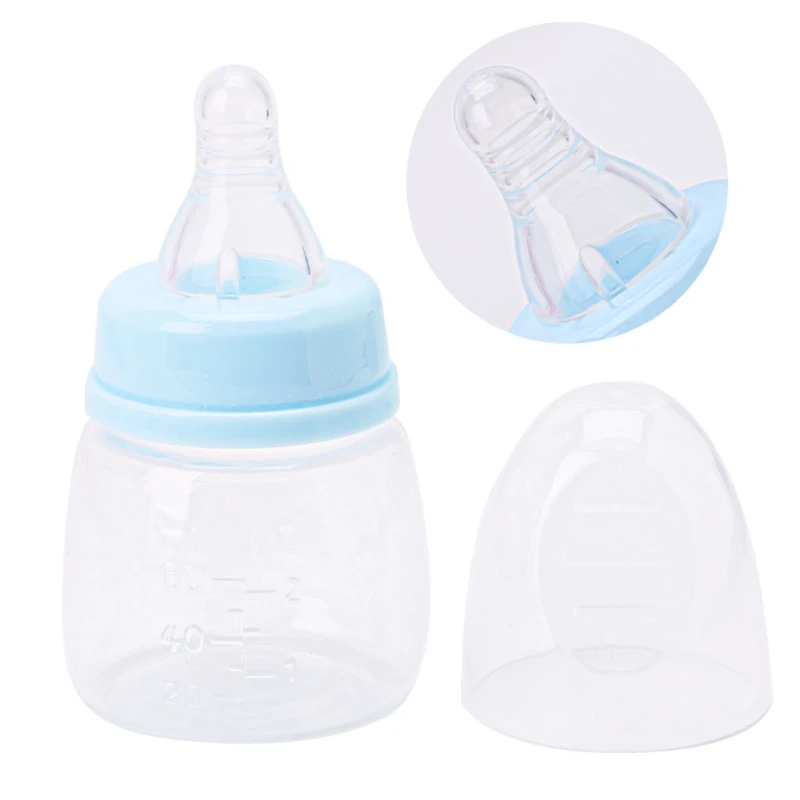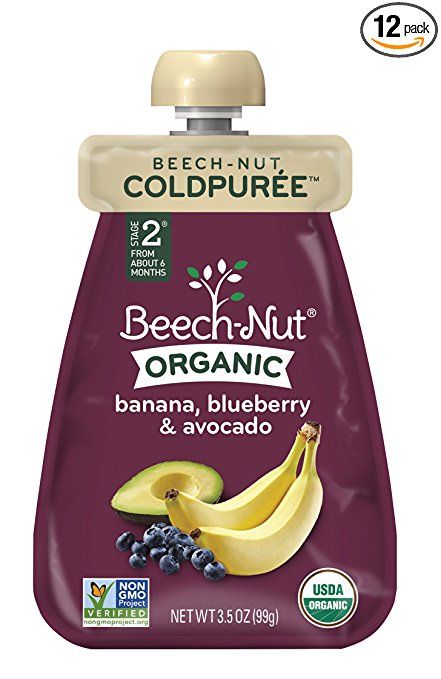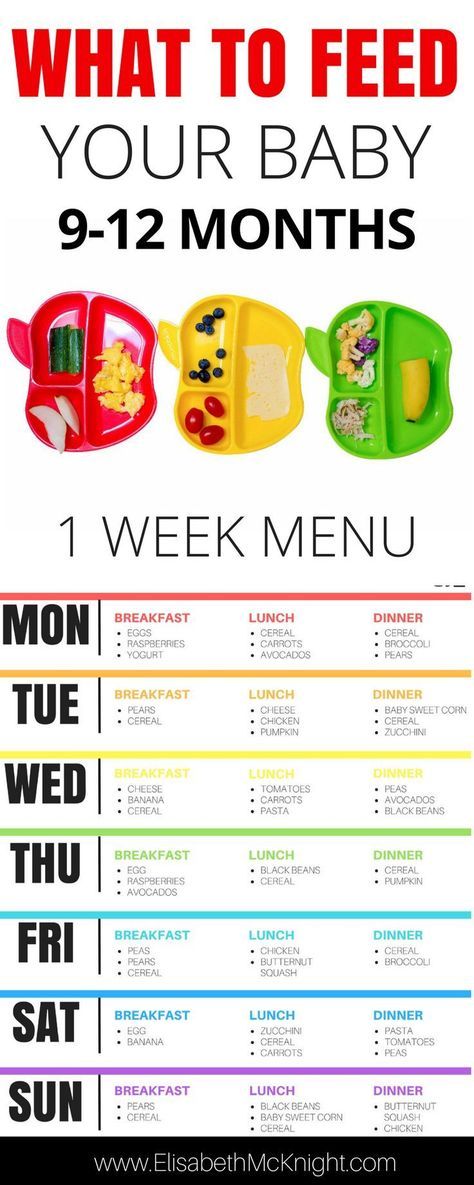Feeding babies with reflux
Reflux And Bottle Feeding | Feeding Your Baby
There may be times when feeding your baby is challenging. Never ignore any issues you may have – talk to your health visitor, midwife or GP if you have any concerns about bottle feeding. Here are some common feeding issues, and tips on what to do.
- Colic and bottle feeding
- Constipation and bottle feeding
- COVID-19 and bottle feeding
- Reflux and bottle feeding
- Tongue-tie and bottle feeding
Reflux and bottle feeding
When your baby brings up milk, or is sick during or after feeding, this is known as reflux. Reflux, also referred to as posseting or spitting up, is quite common and babies usually grow out of it by the age of 1.
What is baby reflux?
The muscle at the bottom of the food pipe (oesophagus) acts as a kind of door into the stomach – so when food or milk travels down, the muscle opens allowing the food into the stomach.
However, while this muscle is still developing in the first year, it can open when it should not (usually when your baby's tummy is full) allowing some food and stomach acid to travel back up again. Acid in the stomach is a normal part of the digestion process – it helps break down food.
In most babies, reflux is nothing to worry about, as long as they are healthy and gaining weight as expected.
What are baby reflux symptoms?
- constant or sudden crying when feeding
- bringing up milk during or after feeds (regularly)
- frequent ear infections
- lots of hiccups or coughing
- refusing, gagging, or choking during feeds
- poor weight gain
- waking at night a lot
GORD
When reflux becomes painful and happens frequently, this is known as ”gastro-oesophageal reflux disease” (GORD). GORD is more serious than mild, everyday reflux. The strong stomach acid can irritate and make the food pipe sore and inflamed, which is painful for your baby and may result in them needing medication.
The main signs and symptoms of GORD in your baby are:
- spitting up frequently
- tummy (abdominal) pain
- feeding difficulties
- seeming unsettled and grizzly after a feed
These symptoms can lead to your baby not gaining weight, or even losing weight.
Silent reflux
Silent reflux can be confusing as there are no obvious signs or clues (such as spitting up). It's when the food travels back up the food pipe – but it's swallowed rather than spat out so is harder to identify. But your baby may display similar symptoms to those of regular reflux.
Bottle feeding tips for babies with reflux
You can help your baby's reflux by:
- feeding little and often, smaller feeds stop their tummy getting too full
- burping your baby frequently during feeds – have a look at our Guide to burping your baby for techniques
- try to keep your baby upright, for at least an hour, after feeding - this should help keep the milk down
If you are using formula, your GP or health visitor may advise you to use a thicker formula (that's less likely to be brought up), or one that does not contain cows' milk if your baby is allergic to it. If the thickening powder does not help, your GP may recommend medicines that stop your baby's tummy producing as much acid.
If the thickening powder does not help, your GP may recommend medicines that stop your baby's tummy producing as much acid.
If you are mixed feeding (combining breastmilk and formula feeds), have a look at our advice on breastfeeding and reflux.
When to seek medical advice
If your baby has difficulty feeding or refuses to feed, keeps vomiting during or after feeding, talk to your pharmacist, GP, or health visitor. They will be able to give you practical advice on how to ease the symptoms and manage it – they may need to rule out other causes such as an intolerance to cows' milk or allergies.
It might be helpful to keep a record of when your baby feeds, with details of how often and how much your baby brings the food back up, and how often your baby cries or seems distressed. This will help your health visitor or GP decide if your baby needs treatment.
Reflux - La Leche League International
A baby spitting up occasionally is usually looked at as “something babies do.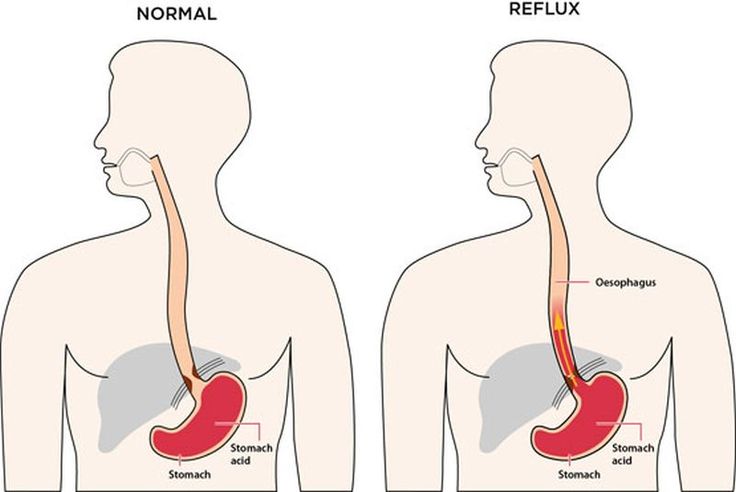 ” According to the late Dr. Gregory White, husband of the late LLL Founder, Mary White, “In a healthy baby, spitting up is a laundry problem, not a medical problem.”
” According to the late Dr. Gregory White, husband of the late LLL Founder, Mary White, “In a healthy baby, spitting up is a laundry problem, not a medical problem.”
A baby may spit up for lots of reasons:
- Baby is not be able to swallow quickly enough when milk ejects forcefully during a feeding, resulting in swallowing excess air.
- Mother has an oversupply of milk that can result in baby taking too much too fast for the stomach to handle. Either can result in additional air swallowed with the large volumes of milk. Read our post on oversupply.
- Less common reasons are:
- Immature muscle control
- Allergy to foods and/or dietary supplements mother may consume
- Disease
If the spitting up is frequent and obviously uncomfortable for baby, it may be that your baby is experiencing gastroesophogeal reflux disease, or GERD.
- GERD occurs when the band of voluntary muscle fibers within the esophagus where it enters the stomach fails to keep the stomach contents in the stomach.

- Milk or food, along with acid from the stomach, backs up into the lower esophagus and irritates the tissues there.
- Adults recognize this feeling as heartburn. Read our post on GERD.
If your baby is overall a pleasant and healthy baby with good output and normal growth patterns, be assured that he will likely outgrow this stage by 6-12 months. In the meantime, here are some general tips to keeping spit up episodes to a minimum:
- Use positions for feeding that keep baby’s head higher than her tummy, such as a laid-back position or having baby diagonally across your chest in a cradle hold. Avoid positions that have baby bending at the waist, putting more pressure on her tummy. See Positioning.
- Keep baby upright for 15-20 minutes or so after feedings to allow for digestion to begin. This is a nice time to just lean back with baby on your chest to soothe, talk, sing, or hum to him or to just snuggle.
- Burp gently between sides and at the end of the feeding.

- Try shorter, frequent feedings, if baby is agreeable, to reduce the load in her tummy.
- Try nursing at one breast only each feeding to avoid two strong milk ejections and, therefore, reducing overfeeding and excess swallowing of air.
Occasionally, some older babies will start to spit up when they hadn’t typically been spitting up. If your baby doesn’t seem ill, other reasons might include:
- Something new to his diet – solids, adding or changing vitamins for you or baby, medications for either of you.
- Growth spurt – when babies start feeding more frequently with a growth spurt, they can be bringing in larger volumes of milk and/or more air.
- Teething – the discomfort of the gums may cause baby to be less efficient with her sucking and take in more air. Teething can also result in increased saliva production and swallowing, adding to the volume of fluid and air in her tummy. See Teething.
Looks like my baby has reflux!
Diseases and special conditions of the baby05/25/2020
It is normal for your baby to spit up in the first couple of months of life. About half of all newborns do this at least once a day. As the baby's digestive system matures, regurgitation occurs less frequently, so for most mothers it is only a short-term inconvenience [1].
About half of all newborns do this at least once a day. As the baby's digestive system matures, regurgitation occurs less frequently, so for most mothers it is only a short-term inconvenience [1].
However, in some children, the valve between the stomach and esophagus does not close properly. Because of this, the contents of the stomach periodically back up into the esophagus and can cause vomiting. Since a child vomits for a variety of reasons, it is important that the doctor rule out other options. But it is quite possible that the baby has gastroesophageal reflux disease (GERD, it is also called gastroesophageal reflux). Reflux is not always noticeable, and it does not always cause discomfort to the child. However, severe symptoms of reflux can be painful and distressing for mother and baby [2]. nine0003
What signs to look out for?
The child may choke and cough, and may have a sore throat. Some children experience bad breath.
The mother may notice that the baby arches its back and turns its head. Instead of cuddling up to the mother, the baby tries to stretch his body, as this reduces the pain.
Instead of cuddling up to the mother, the baby tries to stretch his body, as this reduces the pain.
The baby may cry for a long time and be irritable during and after feeding. Sometimes his screams sound hoarse. This sometimes leads to misdiagnosis: it is mistakenly assumed that the baby has colic. nine0011 The child may resist feeding and even refuse to eat, and as a result, gain weight poorly.
What can help?
- First of all, the baby will most likely be more comfortable if his head is higher than his legs during feeding. For example, you can hold the baby at an angle of 30-40 degrees, placing the lower part of his body on the mother's lap. This is one way to make feeding more comfortable.
- Secondly, if the baby is breastfeeding while lying on its side, it is likely that things will go better on the left side. When you need to give the baby a different breast, it makes sense to change the position, and not turn the baby on the right side. It is also desirable to move the baby to a more upright position as soon as possible after feeding [3].
 nine0019
nine0019 - It is useful to always remember the rule “head over legs”. A sling may come in handy for this purpose. A baby with reflux is often uncomfortable on a flat surface and may cry or spit up when in bed. Some parents prefer to hold their baby in their arms or in a sling during daytime naps. For others, it helps to bring the baby upright for a while after feeding.
- In order to change your baby, you can put him on the side: in this case, the baby will not press his legs on the tummy. Some children like sun loungers in which they lie slightly elevated. Infants with reflux are often uncomfortable traveling in a car seat due to the pressure on their abdomen. Therefore, some mothers prefer to use the car as little as possible as long as the reflux bothers the baby. Instead, they ride public transport and carry their baby in a sling. nine0019
- Since the opening between the stomach and esophagus is usually on the right side, it may be helpful to hold the right side of the child's body higher than the left.

- Short, frequent feedings reduce the frequency and discomfort of reflux [4]. If the mother has plenty of milk, the one-feed-one-breast approach can provide relief. However, it is worth evaluating whether it helps your baby.
What causes reflux?
There are several theories as to why reflux occurs. Some sources write that it is caused by the immaturity of the sphincter muscle [5], which becomes stronger as the child grows. nine0003
Other studies show an association between reflux and allergy or intolerance to cow's milk protein [6]. You can try eliminating dairy products from your diet by talking to your doctor to see if this can improve the situation.
One of the main reasons may be the rapid flow of milk or its excess. If the baby appears to be choking or choking due to the rapid flow, you can try taking him off the breast for a few seconds (until the flow slows down) or feeding in a more upright position. nine0003
Make sure the baby is attached comfortably to the breast. The efficiency of tongue movements also matters. A short frenulum of the tongue can affect the quality of breast sucking and lead to air swallowing.
The efficiency of tongue movements also matters. A short frenulum of the tongue can affect the quality of breast sucking and lead to air swallowing.
related articles:
Adding thickeners to food has significant disadvantages.
The addition of thickeners to expressed breast milk or formula is sometimes thought to help children with reflux. A 2018 study in the British Medical Journal reported that “nutrition thickeners are commonly used to treat children with gastroesophageal reflux despite a lack of conclusive evidence” [7]. Since most of the existing studies evaluating the effectiveness of thickened feeding for reflux symptoms have been conducted in formula-fed infants, information on the possible reduction of regurgitation in breastfed infants is limited [8]. nine0003
In addition to the lack of conclusive evidence, this treatment has a number of significant disadvantages. Introducing complementary foods too early replaces breast milk, which is ideal for infant nutrition, with food with a lower energy content. It also reduces the mother's milk production. Spitting up thickened foods can increase distress and discomfort in a baby, and introducing complementary foods too early can also cause allergies in an already sensitive baby.
It also reduces the mother's milk production. Spitting up thickened foods can increase distress and discomfort in a baby, and introducing complementary foods too early can also cause allergies in an already sensitive baby.
Switching to a mixture may not solve the problem
Although breastfeeding mothers are sometimes encouraged to switch to formula, this can aggravate symptoms. Reflux occurs in both breastfed and formula-fed infants, but studies have shown that formula-fed infants experience more frequent reflux episodes and last longer than breastfed infants [9].
Why is this so? One cause of reflux may be delayed gastric emptying. The fact that breast milk leaves the stomach twice as fast as formula milk means that breast milk reduces the chance of reflux [10]. nine0003
If nothing works
If your child continues to suffer, your pediatrician may refer you to a gastroenterologist for medication.
Good news
In his Guide to Breastfeeding [11], Dr. Jack Newman, member of the International La Leche League Professional Advisory Board, says that breast milk is full of immune factors that interact with each other and protect the baby from bacteria, viruses and other microorganisms. nine0011 They form a protective layer on the baby's mucous membranes that line the intestines, respiratory tract and other areas. This stops microorganisms from entering the body through these mucous membranes. Dr. Newman explains that a baby who spit up gets double protection: both when the milk goes down into the stomach and when the baby spit it up.
Jack Newman, member of the International La Leche League Professional Advisory Board, says that breast milk is full of immune factors that interact with each other and protect the baby from bacteria, viruses and other microorganisms. nine0011 They form a protective layer on the baby's mucous membranes that line the intestines, respiratory tract and other areas. This stops microorganisms from entering the body through these mucous membranes. Dr. Newman explains that a baby who spit up gets double protection: both when the milk goes down into the stomach and when the baby spit it up.
If you need additional help and support, look for the nearest LLL group or meeting leader.
More information can be found here: Reflux in Newborns
Materials used:
1. Nancy Mohrbacher, “Breastfeeding Answers Made Simple. A Pocket Guide for Helping Mothers”
2. La Leche League International, “The Womanly Art of Breastfeeding”, 8th Edition, 2010, p. 417.
417.
3. Boekel, S. “Gastro-esophageal reflux disease (GERD) and the breastfeeding baby”, ILCA Independent Study Module. Raleigh, North Carolina: International Lactation Consultant Association, 2000.
4. La Leche League International, “The Womanly Art of Breastfeeding” 8th Edition, 2010, p. 417.
5. NHS Reflux in babies
6. Nancy Mohrbacher, “Breastfeeding Answers Made Simple” 2010, pp. 517-520.
7. T'ng Chang Kwok, Shalini Ojha and Jon Dorling: “Feed thickeners in gastro-oesophageal reflux in infants” BMJ Pediatrics Open 2018
8. Kwok TC, Ojha S, Dorling J.: “ Feed thickener for infants up to six months of age with gastro‐oesophageal reflux.” Cochrane Database of Systematic Reviews 2017, Issue 12. Art. No.: CD003211. nine0003
9. Hegar B. et al: “Natural evolution of regurgitation in healthy infant.s” Acta Pediatrica 2009; 98(7): 1189-1193
10. Ewer, A. et al: “Gastric emptying in preterm infants”, Arch Dis Child 1994; 71:F24-F27.
Ewer, A. et al: “Gastric emptying in preterm infants”, Arch Dis Child 1994; 71:F24-F27.
11. Dr. Jack Newman and Teresa Pitman: “Dr. Jack Newman’s Guide to Breastfeeding” Revised Edition 2014
Further reading:
- Trikha, A., Baillargeon, J. G., Kuo, Y. F., Tan, A., Pierson, K., Sharma,
- G.,Wilkinson, G.,Bonds, R. S.
- “Development of food allergies in patients with Gastroesophageal
- Reflux Disease treated with gastric acid suppressive medications..”
- Pediatr Allergy Immunol 2013 Sep; 24 (6): 582-8
- The Passage of Maternal Dietary Proteins Into Human Breast Milk
- Gastrointestinal Food Allergie
Article Author I Think My Baby’s Got Reflux Anna Burbidge, LLLGB 201990,000 20 ways to calm a child with reflux. Your baby from birth to two years
Translation by Galina Neupokoeva
Editing by Maria Sorokina, Evgenia Champalova
Proofreading.. Evgenia Champalova
20 Ways to Calm a Child with Reflux
The duration and intensity of treatment for reflux depends on how severely the reflux interferes with the growth and well-being of the child. The doctor observes the child and prescribes a treatment regimen, but parents are also responsible for most of the treatment. As you will soon learn, children with reflux need special care and attention. The goals of reflux treatment are the comfort of the baby, its optimal development and minimization of possible damage to the esophagus. Treatment is continued until the child's digestive system has matured naturally to overcome reflux. The basis of reflux therapy is the following:
Development of a meal plan and selection of fast-digesting foods, and it is also necessary to ensure that food remains in the stomach and is not thrown into the esophagus.
The correct position of the body of the child - day and night - so that gravity helps to keep food in the stomach.
Proper care and care of the child , reducing the frequency of crying attacks, since it is crying that increases pressure on the stomach, which, in turn, increases reflux. nine0003
Here's how to calm a child with reflux.
Natural education . This style of parenting, when you are as close as possible to your child, reduces the child's need to cry (remember that crying increases reflux) and helps parents build relationships with their own child. Less crying and more interaction with your baby is the best recipe for reflux. Natural parenting (especially the three parts of it: breastfeeding, carrying the baby, and learning to recognize the baby's signals) not only helps to calm the baby if he is hurt, but also helps parents better use their intuition to recognize the baby's body language and those signs that he delivers even before crying and before an attack of reflux, and in time to intervene. The mother, under the influence of increased prolactin and oxytocin, feels more calm and relaxed. But above all, avoid the crowd advising you to let the baby cry. Children with reflux cry because they are in pain. If you do not pay attention to a crying baby, then reflux will only increase. Imagine that your timely response to the baby's crying is the best medicine. (See Chapter 1 for a detailed description of how natural parenting helps both parents and children grow.)
The mother, under the influence of increased prolactin and oxytocin, feels more calm and relaxed. But above all, avoid the crowd advising you to let the baby cry. Children with reflux cry because they are in pain. If you do not pay attention to a crying baby, then reflux will only increase. Imagine that your timely response to the baby's crying is the best medicine. (See Chapter 1 for a detailed description of how natural parenting helps both parents and children grow.)
DR BILL'S NOTE. Don't take it personally that your baby cries a lot. Any child knows that his parents are there and take care of him, even if they can not always relieve his pain.
Hold baby half upright, especially during feedings . Gravity helps to naturally hold food in the stomach, preventing it from rising up. Carry your baby in a sling most of the day. Do not leave your child to sit in a car seat or high chair for a long time. When sitting, the child bends over, and thus creates pressure on the stomach, which causes reflux in some children. nine0003
nine0003
The baby should be calm after feedings . Carry your baby in your arms or in a sling for at least 30 minutes after feedings. Dance slowly, but don't squat. But above all, do not involve the baby in too active activities or play immediately after feeding. This can cause reflux.
Feed more often, but in small portions . Follow Dr. Bill's rule: half a serving, but twice as often. Less food in the stomach reduces the chance of reflux. More frequent feedings stimulate salivation. Saliva contains a substance called epidermal growth factor that helps heal damaged tissue in the esophagus. It also neutralizes stomach acid and lubricates irritated esophageal mucosa. nine0003
Let the baby burp . If the child swallows too much air, the reflux increases. When breastfeeding, let your baby burp when you transfer him from one breast to the other. If the baby is bottle-fed, let him burp a few times throughout the feeding. Some modern feeding systems reduce the amount of air in the bottle.
Breastfeed . Breast milk is often referred to as an easy-in and easy-out food. Typically, breastfed babies don't have as much reflux as formula-fed babies. And a breastfeeding mother copes with the problem more easily for the following reasons:
• Breast milk "evacuates" from the stomach much faster than formula.
• Breast milk has a better effect on the intestinal microflora.
• Breastfed babies naturally have more feedings per day, and breastmilk is a natural antacid (acid-reducing agent).
• Breastfed babies have softer stools and are rarely constipated.
• Maternal hormones released during breastfeeding allow the mother to relax. nine0003
A NOTE TO ONE MOTHER. After four doctors, Jacob was diagnosed with gastroesophageal reflux at the age of five months. How glad I am that I did not give up and got to the bottom of the truth, what still hurts my child. One of the drugs given to Jacob was to improve his digestion so that reflux would not occur. I realized: what could be better for a baby than the most easily digestible food in the world - mother's milk! When we went to the specialist recommended by our doctor, he was extremely surprised to see Jacob in such high spirits. He said that most of the children with the same degree of reflux as Jacob's developed poorly and looked very sickly. I'm sure that breastfeeding helped Jacob get better. nine0003
I realized: what could be better for a baby than the most easily digestible food in the world - mother's milk! When we went to the specialist recommended by our doctor, he was extremely surprised to see Jacob in such high spirits. He said that most of the children with the same degree of reflux as Jacob's developed poorly and looked very sickly. I'm sure that breastfeeding helped Jacob get better. nine0003
Consider food or formula intolerance . In the next chapter we will look at food as the cause of colic. It can also cause reflux. If you are breastfeeding, review your diet. Eliminate dairy and wheat products first. Then check to see if there are any other foods that cause your child to worry about in your diet.
Do not put your baby to bed with a bottle or leave your baby unattended with a bottle . Babies with reflux may choke while feeding and may even experience respiratory arrest.
DR BILL'S ADVICE. The mother of a colic baby experiences stress that negatively affects her milk supply.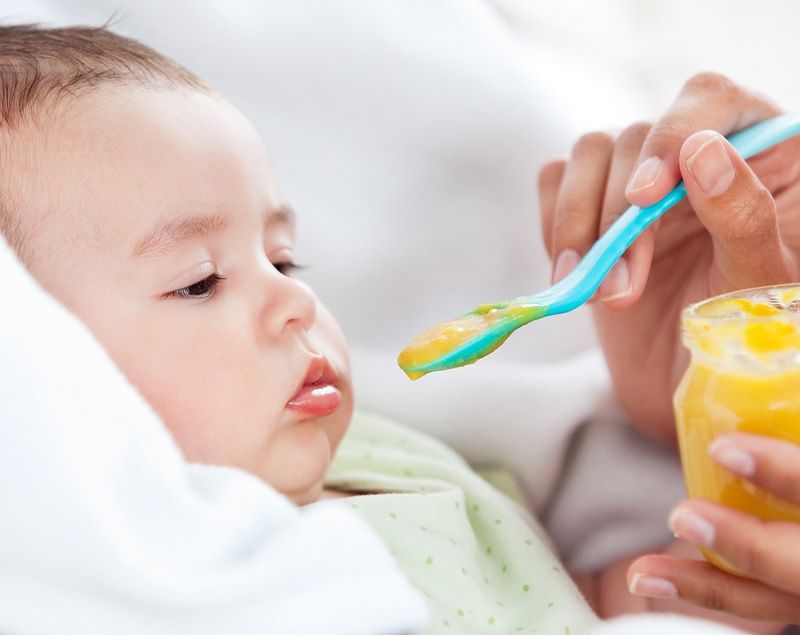 If there is less milk, the baby becomes even more restless, and the mother gradually refuses to breastfeed. Remember our advice: a child needs a happy, rested mother. Seek help from a lactation consultant to maintain your milk supply, seek help with household chores, and make time for yourself. nine0003
If there is less milk, the baby becomes even more restless, and the mother gradually refuses to breastfeed. Remember our advice: a child needs a happy, rested mother. Seek help from a lactation consultant to maintain your milk supply, seek help with household chores, and make time for yourself. nine0003
Try pacifier . Although your chest and arms are the best sedatives, for some children with reflux, frequent use of a pacifier helps. This is why breastfeeding mothers find their babies constantly begging for food. (On the other hand, some babies associate feeding with pain and therefore refuse to eat.) Frequent sucking stimulates saliva production, which, as already mentioned, relieves irritation of the esophagus with reflux. However, be careful, sometimes too much sucking on a pacifier can increase reflux as the baby swallows more air. So see what suits your child. nine0003
Minimize air swallowing and gas formation . When breastfeeding, make sure your baby latch on properly. If you are bottle feeding, use bottles and nipples to reduce air swallowing. Simethicone preparations have a slight effect. These drugs break up large air bubbles into smaller ones that are easier to pass through the intestines. A large amount of air in the stomach and intestines works like a pneumatic pump, when the stomach filled with air contracts, this can cause reflux. nine0003
If you are bottle feeding, use bottles and nipples to reduce air swallowing. Simethicone preparations have a slight effect. These drugs break up large air bubbles into smaller ones that are easier to pass through the intestines. A large amount of air in the stomach and intestines works like a pneumatic pump, when the stomach filled with air contracts, this can cause reflux. nine0003
Try only one breast per feed . In the first few minutes of feeding, the baby receives the so-called foremilk, which is rich in lactose. If a baby suckles from one breast for less than 10 minutes, he will most likely burp, as foremilk contributes to gas and bloating. Hold the baby at one breast for 20-30 minutes so that he also receives low-lactose hindmilk. Discuss with your doctor or lactation consultant the use of this technique, known as block feeding, to reduce reflux. nine0003
Avoid constipation . The tension caused by constipation increases abdominal pressure and can increase reflux. In addition, food that cannot move further along the filled intestine can be thrown into the esophagus.
In addition, food that cannot move further along the filled intestine can be thrown into the esophagus.
Thicken food . If your baby is formula-fed and ready to start complementary foods (that is, he is about six months old), and if your doctor recommends complementary foods, add two or more tablespoons of rice porridge to each bottle of formula (240 grams). The heavier the food, the better it stays in the stomach. Thicker foods help some babies overcome reflux, and for others, on the contrary, make it worse. I'm not sure how thicker foods help with reflux. Also, too much rice porridge can cause constipation. nine0003
DR BILL'S ADVICE: Because many children with reflux are also allergic to milk-based formula, try a hypoallergenic formula that digests faster in the stomach than regular formula.
Find a sleeping position that will reduce reflux symptoms . While babies under six months of age are best placed to sleep on their backs, babies with reflux often sleep better on their left side. (On the left side, the entrance to the stomach is higher than the opening of the pylorus, which helps gravity keep food in the stomach.) Discuss with your doctor whether reflux attacks justify sleeping on your stomach or on your side. Otherwise, put the baby to sleep on his back. Also try the following to reduce reflux symptoms:
(On the left side, the entrance to the stomach is higher than the opening of the pylorus, which helps gravity keep food in the stomach.) Discuss with your doctor whether reflux attacks justify sleeping on your stomach or on your side. Otherwise, put the baby to sleep on his back. Also try the following to reduce reflux symptoms:
• Use a chair or box to raise the head of the crib by at least 30°.
• Try the special crib holder. It is fixed around the top of the mattress, like a fitted sheet. Then the fabric is threaded between the baby's legs, like a diaper, and fastened on the stomach with Velcro. The design does not allow the child to slide down from the tilted mattress.
• If your baby sleeps in your bed, use a reflux-reducing pillow available at baby stores. nine0003
Do not smoke near your child . Nicotine stimulates acid production and opens the lower esophageal sphincter.
Do not put clothes on your baby that will squeeze the tummy.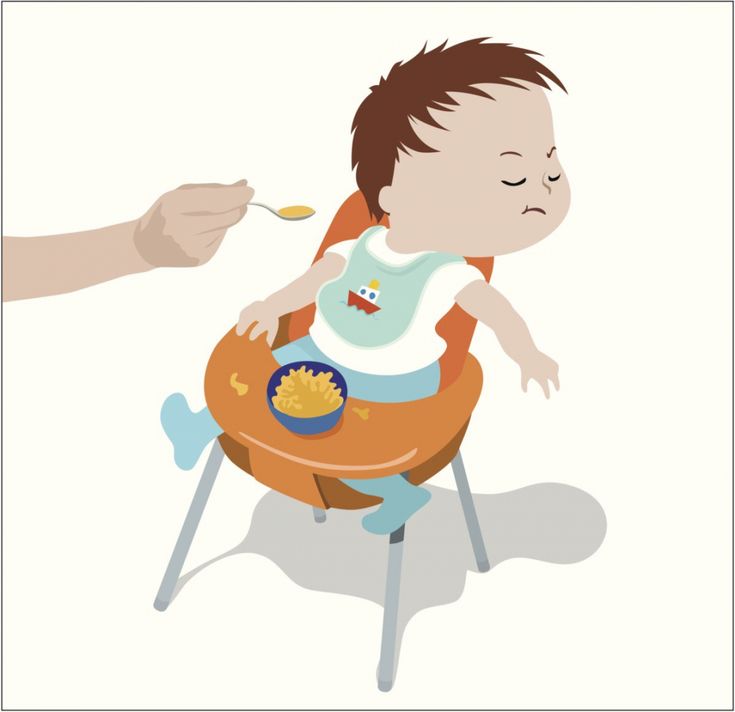
Try reflux medication . The following medications can, of course, help reduce the discomfort of reflux and minimize damage to the esophagus. But they can only be used in conjunction with the already described ways to alleviate reflux: natural parenting, the correct position of the child's body and proper feeding. nine0003
Antacids. These medications, available over-the-counter from pharmacies, neutralize stomach acid. They are given three to four times a day with meals (the specific drug and dose should be determined by the doctor), and the effect is not long in coming. However, the neutralizing effect lasts only a couple of hours. For older children, it is better to give chewable tablets, as they stimulate salivation, mix with saliva, which helps the antacid coat the esophageal mucosa and better neutralize acid. Long-term use of some antacids can cause constipation or diarrhea. nine0003
Acid secretion suppressors. These drugs block changes in the level of acid production in the stomach. The effect will have to wait from 30 minutes to two hours, but it can last up to 8 hours. Such drugs are usually given to the child twice a day. If the symptoms of reflux prevent the child from sleeping, give him the drug an hour before bedtime.
The effect will have to wait from 30 minutes to two hours, but it can last up to 8 hours. Such drugs are usually given to the child twice a day. If the symptoms of reflux prevent the child from sleeping, give him the drug an hour before bedtime.
Drugs that affect gastrointestinal motility. These drugs work in the following way: they increase muscle tone and thereby cause the muscle of the lower esophageal sphincter to tighten or increase the muscle motility of the stomach and upper intestine, and therefore food passes from the stomach to the intestines faster. They are sometimes called prokinetics. Antacids and drugs that block acid secretion do not reduce reflux, but only pain and reduce the negative effect of acid on the esophagus. While drugs that affect motility do reduce reflux symptoms, they may have more side effects. nine0003
An individual reflux treatment regimen that is right for your child should be developed exclusively under the supervision of a pediatrician or pediatric gastroenterologist.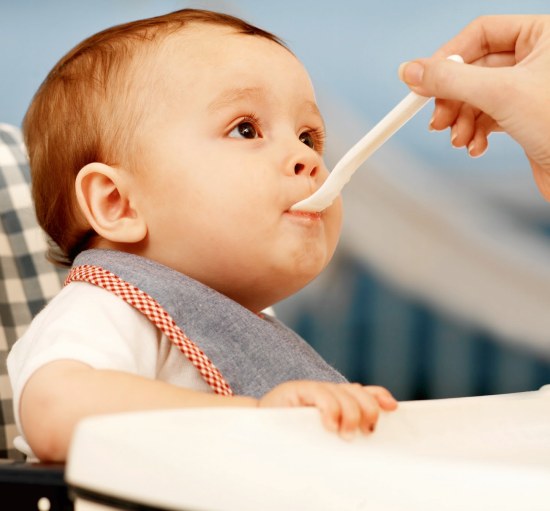 Do not exceed prescribed dosages of medications and do not use over-the-counter medications without the knowledge of your doctor. All drugs have both positive effects on the body and side effects, and drugs that reduce acidity or block the secretion of gastric juice can only be used when reflux really bothers the child and / or can damage the lining of his esophagus. On the other hand, untreated reflux can lead to serious consequences such as a damaged esophagus or asthma. One of the reasons to be careful with antacids is that the acid produced by the stomach has a positive effect. It promotes better digestion of proteins, some vitamins and minerals. The acid also destroys harmful bacteria that enter the stomach, thereby maintaining the balance of beneficial bacteria in the intestines. And finally, the right amount of gastric juice maintains a balance of hormones that facilitate the passage of food into the intestines. Use antacids only if your reflux symptoms have not improved after you tried the methods above.
Do not exceed prescribed dosages of medications and do not use over-the-counter medications without the knowledge of your doctor. All drugs have both positive effects on the body and side effects, and drugs that reduce acidity or block the secretion of gastric juice can only be used when reflux really bothers the child and / or can damage the lining of his esophagus. On the other hand, untreated reflux can lead to serious consequences such as a damaged esophagus or asthma. One of the reasons to be careful with antacids is that the acid produced by the stomach has a positive effect. It promotes better digestion of proteins, some vitamins and minerals. The acid also destroys harmful bacteria that enter the stomach, thereby maintaining the balance of beneficial bacteria in the intestines. And finally, the right amount of gastric juice maintains a balance of hormones that facilitate the passage of food into the intestines. Use antacids only if your reflux symptoms have not improved after you tried the methods above. nine0003
nine0003
Keep a diary . You need to be a close observer and carefully record any signs of reflux in your child, as the doctor will often base a treatment regimen on your observations. The doctor relies on your observations to change the treatment regimen, drugs and dosages. In your diary, note the child's main symptoms, treatment regimen used, and progress (better, worse, or no change).
Seek support . Ask your doctor which parents whose children also suffer from reflux might be consulted. Reflux has been recognized as one of the causes of colic, frequent respiratory infections and asthma, and therefore, understanding this phenomenon and its timely treatment will soon bring positive results.
PARENT ADVICE: Never give up on what your child is really worried about. Be persistent in getting the medical attention you need. nine0003
Additional advice for children from the year . Although most children outgrow reflux by their first birthday, some children have it for longer. Try the following tricks for children aged one and older:
Try the following tricks for children aged one and older:
Chew Chew Chew. If you teach your child to take food in small pieces and chew thoroughly, he will swallow less air. In addition, well-chewed food is digested faster in the stomach and passes into the intestines.
Let the child "graze". Frequent, tiny meals help digest food easily (see tips for organizing your baby's "buffet" tray).
Sit quietly and eat. Restless behavior at the table causes the release of acid into the esophagus. Teach your child to sit or stand quietly for half an hour after eating.
Don't eat too much at night. Eat early and save low-fat, fast-digesting foods for your evening snack. It is useful for adults to remember: "Do not eat after nine." nine0003
Befriend the blender. Fruit and yogurt smoothies and vegetable purees pass through the stomach quickly and therefore cause less reflux.
Don't let your baby get fat. Obesity contributes to the development of reflux.
Obesity contributes to the development of reflux.
Avoid foods that take a long time to digest. As well as products that increase the secretion of gastric juice and possibly provoke reflux.
nine0002 This text is an introductory fragment.9 ways to disobey
9 Ways to Disobey An obedient child is, first of all, a child who is able to listen to the opinions of adults, think over reasonable arguments and stick to them. He is not a puppet at all, following all instructions on demand! What is obedience, in general
Child's dream
Sleep baby Need for sleep • The baby needs one 1.5–2 hour afternoon rest. • Night sleep should be 10–11 hours.
The impact of divorce on the mental state of the child.
 The importance of a complete family in a child's life
The importance of a complete family in a child's life The impact of divorce on the mental state of the child. The value of a complete family in a child's life “The daughter of my friend did not remember her father, because he left the family when she was only a year old and never asked about him. But one day in kindergarten she suddenly burst into tears and shouted: “My
How to calm a child
How to calm a child Words of comfort are needed for every child: from a baby who cannot sleep, to a teenage girl who has not been noticed by her chosen one, and to a boy who has not received an award or a job that he so aspired to. Parents feel an impulse to caress
Memo for parents, or Ten ways to feed a capricious
Memo for parents, or Ten ways to feed a capricious So, now we know why babies are naughty and refuse such delicious porridge (soup, potatoes, etc. ). Let's put together all the tricks and proprietary recipes that will help you still feed the capricious
). Let's put together all the tricks and proprietary recipes that will help you still feed the capricious
How to calm a sick child
How to calm a sick child Carlson leaned back on the pillow and sighed heavily: “How unhappy all the sick are! How unhappy I am! Give me chocolate now. A. Lindgren Do you love to get sick? No. And if it seems to someone that he loves to get sick, then this is not so. You hardly get
Teach your child to experience triumph. A child's birthday is the best occasion!
Teach your child to experience triumph. A child's birthday is the best occasion! Some people don't like their birthday. They never invite guests or try to move away, they are painful and skeptical about congratulations on duty, they can return a gift ...
Chapter 11 Support Your Child Be prepared to lend a shoulder and support your child with teachers, academics, and sports
Chapter 11 Support your child Be ready to lend a shoulder and support your child in relationships with teachers, in school and in sports. A child is not a vessel to be filled, but a fire to be kindled. Rabelais Introverted children are born learners, there are 9 of them0003
A child is not a vessel to be filled, but a fire to be kindled. Rabelais Introverted children are born learners, there are 9 of them0003
Ten Ways to Help Children Build Self-Respect
Ten Ways to Help Children Build Self-Respect Throughout life, your child will experience positive influences (creative) and negative influences (destructive). Parents should have a creative influence on the child and teach
9 ways to reduce your child's risk of SIDS
9 Ways to Reduce Your Child's Risk of SIDS Based on current SIDS research, including our own theories, here are some tips for reducing your child's risk of SIDS.1. Get yourself a good antenatal care. Do your best,
Five ways to protect your baby from excess fat
Five ways to protect your child from excess fat Give your child milk, the calorie content of which is selected individually. Breastfeed. We are convinced that breastfeeding reduces the risk of obesity. Breast milk contains the newly discovered factor
Breastfeed. We are convinced that breastfeeding reduces the risk of obesity. Breast milk contains the newly discovered factor
14 Carrying a child: the art and science of carrying your child
fourteen Carrying a Baby: The Art and Science of Carrying Your Baby The mothers of the restless children we meet in our practice would subscribe to the statement: "As long as I carry my baby, he is calm." Watching parents take advantage more and more
How to calm a screaming child
How to calm a screaming baby Exhausted parents are ready to try anything. This is the key to the solution - try everything. Most ways to calm a child can be grouped into four categories: • soothing rhythmic movements; • relaxing
Seven ways to make your child smarter
Seven ways to make your child smarter You can influence the development of your child's brain.